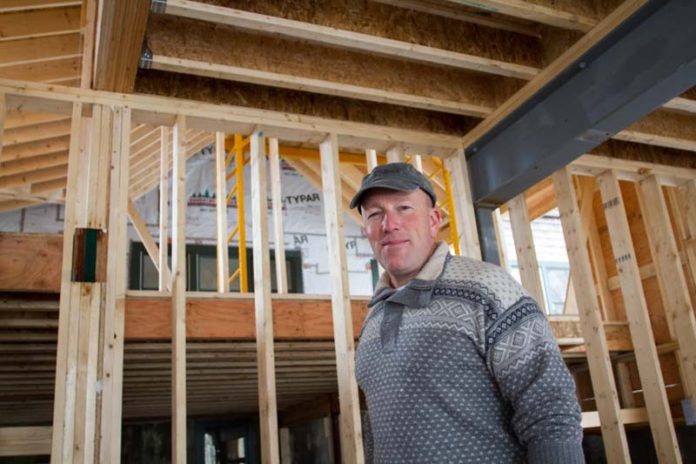
Rhode Island’s long freefall in residential construction has finally come to an end.
For second time since 2005, builders began work on more new homes in the state last year than the previous year, according to U.S. Commerce Department building-permit figures.
And this time the increase was at least somewhat substantial, 25 percent year over year, compared with the 4 percent increase from 2011 to 2012.
Although an increase of 184 new units represents progress for the housing market, it’s modest relief to people in the building trades who were used to construction volume more than three times as large a decade ago.
“We are crawling out of the grave here,” said David A. Caldwell Jr., vice president of Caldwell and Johnson Custom Builders in North Kingstown. “The first half of last year especially there was an uptick, although it stalled a bit with interest rates going up and the government shutdown.”
Along with a greater number of total unit starts, 2013 also ended with 700 more Rhode Island-based construction jobs (including commercial and industrial) than 2012, an increase after near record-low job figures in 2012.
Specializing in high-efficiency and environmentally friendly residential construction, Caldwell and Johnson, like many Rhode Island builders now, works mostly on either end of the residential market, luxury or subsidized low-income projects.
That’s because recouping the cost of new construction – including land, permitting and labor – requires either government subsidies or upper-tier purchase prices, according to most builders.
Now nearly five years since the official end of the Great Recession, the pace of local construction remains a shadow of what it was in the mid-2000s, when inflated prices and cheap credit overcame the high cost of construction and resistance to new development.
Even with the modest rebound last year, the 915 units started in 2013 were 143 fewer than in crisis-ravaged 2008.
The construction market has been much healthier in Massachusetts, where new housing rose 44 percent between 2011 and 2012 and 31 percent last year.
That helped the Providence metro area, which includes Bristol County, Mass., rise 16 percent between 2011 and 2012 and another 23 percent in 2013.
Although a few cities have loosened some of their land-use regulations, such as off-street parking minimums and height limits, to encourage development in downtowns and priority areas, the kind of density required to make most privately financed projects viable is still forbidden in most of the state.
“We’ve got some extraordinarily anti-development land-use planning here,” Caldwell said. “Most towns are happy if you build for wealthy individuals who don’t live [there], so there are no new kids to educate.”
Robert Baldwin, owner of R.B. Homes Inc. in Lincoln, said right now in most Rhode Island communities the best you can hope for is to finish a house for about $395,000, including land costs, which still puts you in the upper mid-range market with little margin.
Although he works in the single-family market, Baldwin said his sense is that some communities have become more open to allowing denser, multifamily projects, but only on a case-by-case basis if they happen to like what is proposed.
“For most of the state it was an incremental increase in 2013,” Baldwin said. “But the high end along the shore is booming with out-of-staters coming in with money.”
From an employment perspective, one concern is that despite approximately 7,800 people leaving the construction industry in Rhode Island since 2006, the ratio of workers to new units built remains far higher than it was before the crash, according to figures from the R.I. Department of Labor and Training.
In 2006, there were about 10 workers in the construction industry for every new unit built, a ratio that peaked at 20 workers per unit in 2012 and settled to 17 workers per unit last year. That could indicate contractors could still increase capacity with their current teams.
Glen Parker, president of Parker Construction in East Providence, said although builders have certainly slimmed down since the recession, they can only get so lean and still compete for large projects.
“We have all made an effort through design to make due with the staffing we have,” Parker said. “But there are limits to what we can do and still provide the service, quality and professionalism we need to clients.”
Caldwell said he’s hiring in 2014 and, as things have gotten busier, finding quality workers – a common challenge in many Ocean State industries – has become more difficult and in some cases forced him to look out of state. •












